#Science communication: theory and models
Explore tagged Tumblr posts
Text

Inspired by all the newly created communities i have also created one about the topic closest to my heart: Foundational Mathematics
It is inteded for all types of posts about and from people of all kinds of backgrounds interested in the topic.
Please share with anyone you think might be interested. If you want to be added comment on this post, so I can add you.
#mathematics#set theory#model theory#category theory#combinatorics#type theory#foundational mathematics#computability#theoretical computer science#philosophy of mathematics#logic#ramsey theory#fraisse theory#math#community
22 notes
·
View notes
Text
Writing Notes: Hierarchy of Needs

Abraham Maslow’s (1943) hierarchy of human needs has profoundly influenced the behavioral sciences, becoming a seminal concept in understanding human motivation.
The original pyramid comprises 5 levels:
Physiological needs: Basic requirements for survival, such as food, water, shelter, and sleep
Safety needs: Security of body, employment, resources, morality, the family, health, and property
Love and belonging needs: Friendship, family, intimacy, and a sense of connection
Esteem needs: Respect, self-esteem, status, recognition, strength, and freedom
Self-Actualization: The desire to become the best that one can be
Maslow posited that our motivations arise from inherent and universal human traits, a perspective that predated and anticipated evolutionary theories in biology and psychology (Crawford & Krebs, 2008; Dunbar & Barrett, 2007).
Maslow developed his theory during the Second World War, a time of global upheaval and change, when the world was grappling with immense loss, trauma, and transformation. This context influenced Maslow’s emphasis on the individual’s potential for growth, peace, and fulfillment beyond mere survival.
It is noteworthy that Maslow did not actually create the iconic pyramid that is frequently associated with his hierarchy of needs. Researchers believe it was popularized instead by psychologist Charles McDermid, who was inspired by step-shaped model designed by management theorist Keith Davis (Kaufman, 2019).
Over the years, Maslow (1970) made revisions to his initial theory, mentioning that 3 more levels could be added:
cognitive needs,
aesthetic needs, and
transcendence needs (e.g., mystical, aesthetic, sexual experiences, etc.).
Criticisms of the Hierarchy of Needs
Criticism of Maslow’s hierarchy of needs has been a subject of ongoing discussion, with several key limitations identified by scholars and practitioners alike. Understanding these critiques and integrating responses to them is vital for therapists aiming to apply the hierarchy in a modernized way in their practice.
Needs are Dynamic
Critics argue that the original hierarchy does not offer an accurate depiction of human motivation as dynamic and continuously influenced by the interplay between our inner drives and the external world (Freund & Lous, 2012).
While Maslow’s early work suggested that one must fulfill lower levels in order to reach ultimate self-actualization, we now know human needs are not always clearly linear nor hierarchical.
People might experience and pursue multiple needs simultaneously or in a different order than the hierarchy suggests. After all, personal motives and environmental factors constantly interact, shaping how individuals respond to their surroundings based on their past experiences.
Cultural Bias
One of the primary criticisms is the cultural bias inherent in Maslow’s original model. While many human needs can be shared among cultures, different cultures may prioritize certain needs or goals over others (Tay & Diener, 2011).
It’s often argued that Maslow’s emphasis on self-actualization reflects a distinctly Western, individualistic perspective, which may not resonate with or accurately represent the motivational structures in more collectivist societies where community and social connectedness are prioritized.
Empirical Grounding
The hierarchy has also faced scrutiny for its lack of empirical grounding, with some suggesting that there isn’t sufficient research to support the strict ordering of needs (Kenrick et al., 2010).
In practice, this limitation can be addressed by viewing the hierarchy as a descriptive framework rather than a prescriptive one.
Source ⚜ More: Writing Notes & References ⚜ Writing Resources PDFs
#writing reference#writeblr#dark academia#character development#psychology#spilled ink#literature#writing tips#writing prompt#creative writing#fiction#writers on tumblr#writing advice#story#novel#light academia#writing inspiration#writing ideas#writing resources
121 notes
·
View notes
Text
There is no obvious path between today’s machine learning models — which mimic human creativity by predicting the next word, sound, or pixel — and an AI that can form a hostile intent or circumvent our every effort to contain it. Regardless, it is fair to ask why Dr. Frankenstein is holding the pitchfork. Why is it that the people building, deploying, and profiting from AI are the ones leading the call to focus public attention on its existential risk? Well, I can see at least two possible reasons. The first is that it requires far less sacrifice on their part to call attention to a hypothetical threat than to address the more immediate harms and costs that AI is already imposing on society. Today’s AI is plagued by error and replete with bias. It makes up facts and reproduces discriminatory heuristics. It empowers both government and consumer surveillance. AI is displacing labor and exacerbating income and wealth inequality. It poses an enormous and escalating threat to the environment, consuming an enormous and growing amount of energy and fueling a race to extract materials from a beleaguered Earth. These societal costs aren’t easily absorbed. Mitigating them requires a significant commitment of personnel and other resources, which doesn’t make shareholders happy — and which is why the market recently rewarded tech companies for laying off many members of their privacy, security, or ethics teams. How much easier would life be for AI companies if the public instead fixated on speculative theories about far-off threats that may or may not actually bear out? What would action to “mitigate the risk of extinction” even look like? I submit that it would consist of vague whitepapers, series of workshops led by speculative philosophers, and donations to computer science labs that are willing to speak the language of longtermism. This would be a pittance, compared with the effort required to reverse what AI is already doing to displace labor, exacerbate inequality, and accelerate environmental degradation. A second reason the AI community might be motivated to cast the technology as posing an existential risk could be, ironically, to reinforce the idea that AI has enormous potential. Convincing the public that AI is so powerful that it could end human existence would be a pretty effective way for AI scientists to make the case that what they are working on is important. Doomsaying is great marketing. The long-term fear may be that AI will threaten humanity, but the near-term fear, for anyone who doesn’t incorporate AI into their business, agency, or classroom, is that they will be left behind. The same goes for national policy: If AI poses existential risks, U.S. policymakers might say, we better not let China beat us to it for lack of investment or overregulation. (It is telling that Sam Altman — the CEO of OpenAI and a signatory of the Center for AI Safety statement — warned the E.U. that his company will pull out of Europe if regulations become too burdensome.)
1K notes
·
View notes
Text
🧵Meet 15 Jewish Nobel Prize Winners Who Changed History🧵
The Jewish population constitutes just 0.18% of the world (15.3 million out of 8.2 billion), yet approximately 20-30% of Nobel Prize winners in fields like Physics, Chemistry, and Medicine are Jewish. This incredible fact highlights the Jewish community's historic contributions to humanity.
Let’s meet just 15 of the over 200 Jewish Nobel Prize winners.
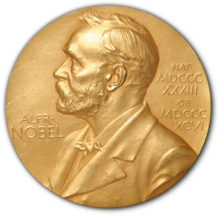
1/ Albert Einstein (1921, Physics).
Einstein was born in Germany to a secular Jewish family. His groundbreaking discovery of the photoelectric effect laid the foundation for quantum mechanics, earning him the Nobel Prize.
▪ His theory of relativity (E=mc²) reshaped our understanding of gravity and spacetime.
▪In 1933, Einstein fled Nazi Germany to the U.S., where he became a vocal advocate for civil rights and Zionism. ▪He helped inspire the Manhattan Project but later became an advocate for nuclear disarmament.

2/ Niels Bohr (1922, Physics).
Born in Denmark to a Jewish mother, Bohr revolutionized atomic physics.
▪His Bohr Model showed electrons orbit the nucleus in distinct energy levels. ▪During WWII, Bohr worked on the Manhattan Project after escaping Nazi persecution. ▪Beyond science, Bohr advocated for global cooperation and peaceful nuclear energy use.
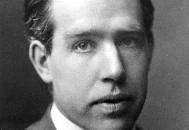
3/ Shmuel Yosef Agnon (1966, Literature).
Born in Galicia (modern-day Ukraine), Agnon immigrated to Ottoman Palestine in 1908.
▪His novels and stories delve into Jewish tradition, spirituality, and the tension between modernity and faith. ▪His acclaimed works include A Simple Story and Only Yesterday. ▪Agnon’s Nobel solidified Hebrew literature's global recognition.

4/ Rosalyn Yalow (1977, Medicine).
Yalow, born in New York to a Jewish family, co-developed radioimmunoassay (RIA), a groundbreaking technique to measure hormones in blood.
▪Her work revolutionized the diagnosis and treatment of diseases like diabetes. ▪Despite gender biases in science at that time, she became the second woman to win the Medicine Nobel.
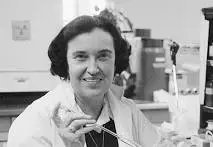
5/ Baruch Blumberg (1976, Medicine).
Blumberg, a Jewish-American physician, discovered the Hepatitis B virus and developed its vaccine.
▪His research saved millions from liver disease and cancer.
▪Blumberg also served as the first director of NASA’s Astrobiology Institute, exploring life’s origins in the universe.
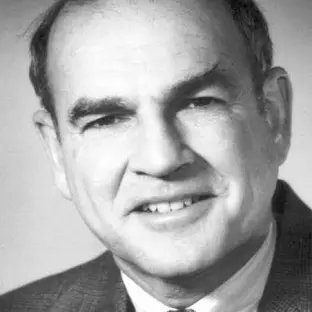
6/ Lev Landau (1962, Physics)
Born in Baku, Azerbaijan, to a Jewish family, Landau made ground-breaking contributions to condensed matter physics and quantum mechanics.
▪His groundbreaking work on superfluidity explained the behavior of liquid helium at extremely low temperatures. ▪Landau also developed the "Landau-Lifshitz equations," foundational in describing ferromagnetism. ▪Known as a genius in theoretical physics, his "Landau Levels" remain crucial in quantum mechanics.

7/ Richard Feynman (1965, Physics).
Feynman, born to Jewish parents in New York, shared the Nobel for his work in quantum electrodynamics (QED).
▪Known for his brilliance and humor, he revolutionized particle physics with "Feynman diagrams." ▪He contributed to the Manhattan Project and inspired countless scientists through his lectures and books like Surely You’re Joking, Mr. Feynman!

8/ Elie Wiesel (1986, Literature).
A Romanian-born Holocaust survivor, Wiesel wrote Night, a searing memoir of his Auschwitz experience.
▪He dedicated his life to Holocaust education and combating hatred. ▪Wiesel’s Nobel recognized his literary contributions, ensuring the horrors of the Holocaust were never forgotten.
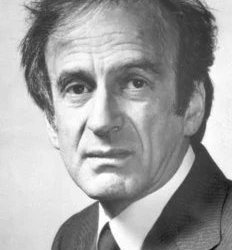
9/ Herbert Hauptman (1985, Chemistry).
Hauptman, a Jewish-American mathematician, co-developed direct methods for solving crystal structures, revolutionizing crystallography.
▪His work paved the way for advances in drug design, enabling scientists to develop life-saving medications. ▪Hauptman’s methods remain foundational in understanding molecular structures in biology and medicine.
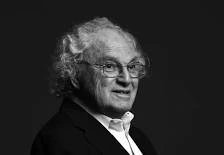
10/ Robert Aumann - Yisrael Aumann. (2005, Economics).
An Israeli-American mathematician, Aumann revolutionized game theory, analyzing strategic interactions between rational decision-makers.
▪His work, particularly on "repeated games," has applications in economics, military strategy, and even evolutionary biology. ▪Aumann is an observant Orthodox Jew and has been a vocal advocate for Israel's security and has connected his mathematical insights with the Talmudic concept of fairness and justice. He often reflects on his Jewish heritage in his work and public speeches.
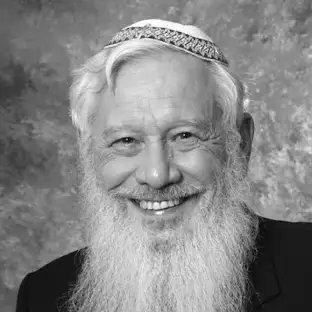
11/ Aaron Ciechanover (2004, Chemistry).
Ciechanover, born in Haifa, Israel, discovered the ubiquitin-mediated protein degradation system.
▪This mechanism explains how cells identify and destroy faulty or damaged proteins, which is essential for maintaining health. ▪His findings have significant implications for treating diseases like cancer, Alzheimer's, and Parkinson's.
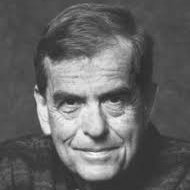
12/ Avram Hershko (2004, Chemistry).
Hershko, born in Hungary and a Holocaust survivor, worked alongside Ciechanover on the ubiquitin system.
▪His research showed how proteins are tagged for destruction, which is vital for cellular health. ▪Hershko’s journey from surviving the Holocaust to becoming a Nobel laureate highlights the resilience and brilliance of Jewish scientists.

13/ Daniel Kahneman (2002, Economics).
Kahneman, born in Tel Aviv, is a psychologist whose work transformed economics.
▪He co-authored Thinking, Fast and Slow, exploring how cognitive biases affect decision-making. ▪His prospect theory explained how people assess risk, challenging classical economic theories of rationality.

14/ Ada Yonath (2009, Chemistry).
An Israeli crystallographer, Yonath is celebrated for uncovering the 3D structure of ribosomes, the cell's protein factories.
▪Her work advanced the development of antibiotics targeting bacterial ribosomes, combating antibiotic resistance. ▪Yonath is the first Israeli woman to win the Nobel Prize in Chemistry.

15/ Saul Perlmutter (2011, Physics).
An astrophysicist from Berkeley, Perlmutter co-discovered that the universe’s expansion is accelerating due to "dark energy."
▪His work confirmed the existence of this mysterious force, which makes up about 68% of the universe. ▪Perlmutter’s groundbreaking discovery led to a wave of new theories and observations in cosmology, changing how we understand the cosmos and our place within it.

Conclusion.
Of the 976 individual winners of the Nobel Prize and the Nobel Memorial Prize in Economic Sciences from 1901 through 2024, at least 217 have been Jews or people with at least one Jewish parent, an astonishing 22% of all recipients.
This amazing achievement underlines the huge contribution that the Jewish community has made to world progress in a wide range of areas, from science and medicine to literature and economics.
With only 0.2% of the world's population, Jewish people have continued to shape and inspire the world with intellectual perseverance and innovation, thus leaving a lasting legacy for future generations.
Correction *Jewish population is at 15.8 million.
Correction: Wiesel won for peace.
@AP_from_NY
55 notes
·
View notes
Note
hello! im just finishing up my read of structures of scientific revolutions, which has genuinely been very useful and shifted my understanding of science in a way being around people doing scientific research all day really didn't! i don't have a liberal arts education so i would love to get a sense of (a) what else of the philosophy / history of science canon is worth reading in the original (b) standard review papers or introductory textbooks and (c) critiques of the canon. i understand this is a big ask ofc, so feel free to point me to good depts / syllabi from good courses. thanks :)
yessss such a fun question >:) so, the thing that was so great about 'the structure of scientific revolutions', which i'm sure you've picked up on, is that kuhn pushed historians and philosophers of science to challenge the positivist model of science as a linearly progressive search to 'accumulate knowledge'. the idea of a 'paradigm shift' was itself a paradigm shift at the time; it was an early example of a language for talking about radical change in science without giving into the assumption that change necessarily = 'progress' (defined by national interests, mathematisation, and so forth). this is still an approach that's foundational to history and philosophy of science; it's now taken as so axiomatic that few academics even bother to gloss or defend it in monographs (which raises its own issue with public communication, lol).
where kuhn falls apart more (and this was typical for a philosopher of his era, training, and academic milieu) is in the fact that he never developed any kind of rigorous sociological analysis of science (despite alluding to such a thing being necessary) and you probably also noticed that he makes a few major leaps that indicate he's not fully committed to thinking through the relationship between science and politics. so for example, we might ask, can a paradigm shift ever occur for a reason other than a discovered 'anomaly' that the previous paradigm can't account for? for instance, how do political investments in science and scientific theories affect what's accepted as 'normal science' in a kuhnian sense? are there historical or present cases where a paradigm didn't change even though it persistently failed to explain certain empirical observations or data? what about the opposite, where a paradigm did change, but it wasn't necessarily or exclusively because the new paradigm was a 'better' explanation scientifically? how do we determine what makes an explanation 'better', anyway, especially given that kuhn himself was very much invested in moving beyond the naïve realist position? and on the more sociological side, we can raise issues like: say you're a scientist and you legitimately have discovered an 'anomaly'. how do you communicate that to other scientists? what mechanisms of knowledge production and publication enable you to circulate that information and to be taken seriously? what modes of communication must you use and what credentials or interpersonal connections must you have? what factors cause theories and discoveries to be taken more or less seriously, or adopted more or less quickly, besides just their 'scientific utility' (again, assuming we can even define such a thing)?
again, this is not to shit on kuhn, but to point out that both history and philosophy of science have had a lot of avenues to explore since his work. note that there are a few major disciplinary distinctions here, each with many sub-schools of thought. a 'science and technology studies' or STS program tends to be a mix of sociological and philosophical analysis of science, often with an emphasis on 'technoscience' and much less on historical analysis. a philosophy of science department will be anchored more firmly in the philosophical approach, so you'll find a lot of methodological critique, and a lot of scholarship that seeks to tackle current aporias in science using various philosophical frameworks. a history of science program is fundamentally just a sub-discipline of history, and scholarship in this area asks about the development of science over time, how various forms of thinking came into and out of favour, and so forth. often a department will do both history and philosophy of science (HPS). historians of medicine, technology, and mathematics will sometimes (for arcane scholastic reasons varying by field, training, and country) be anchored in departments of medicine / technology / mathematics, rather than with other faculty of histsci / HPS. but, increasingly in the anglosphere you'll see departments that cover history of science, technology, and mathematics (HSTM) together. obviously, all of these distinctions say more about professional qualifications and university bureaucracy than they do about the actual subject matter; in actuality, a good history of science should virtually always include attention to some philosophical and sociological dimensions, and vice versa.
anyway—reading recs:
there are two general reference texts i would recommend here if you just want to get some compilations of major / 'canonical' works in this field. both are edited volumes, so you can skip around in them as much as you want. both are also very limited in focus to, again, a very particular 'western canon' defined largely by trends in anglo academia over the past half-century or so.
philosophy of science: the central issues (1998 [2013], ed. martin curd & j. a. cover). this is an anthology of older readings in philsci. it's a good introduction to many of the methodological questions and problems that the field has grown around; most of these readings have little to no historical grounding and aren't pretending otherwise.
the cambridge history of science (8 vols., 2008–2020, gen. eds. david c. lindberg & ron numbers). no one reads this entire set because it's long as shit. however, each volume has its own temporal / topical focus, and the essays function as a crash-course in historical methodology in addition to whatever value you derive from the case studies in their own right. i like these vols much more than the curd & cover, but if you really want to dig into the philosophical issues and not the histories, curd & cover might be more fun.
besides those, here are some readings in histsci / philsci that i'd recommend if you're interested. for consistency i ordered these by publication date, but bolded a few i would recommend as actual starting points lol. again some of these focus on specific historical cases, but are also useful imo methodologically, regardless of how much you care about the specific topic being discussed.
Robert M. Young. 1969. "Malthus and the Evolutionists: The Common Context of Biological and Social Theory." Past & Present 43: 109–145.
David Bloor. 1976 [1991]. Knowledge and Social Imagery. Chicago: University of Chicago Press (here is a really useful extract that covers the main points of this text).
Ian Hacking. 1983. Representing and Intervening: Introductory Topics in the Philosophy of Natural Science. Cambridge: Cambridge University Press.
Steven Shapin. 1988. “Understanding the Merton Thesis.” Isis 79 (4): 594–605.
Steven Shapin and Simon Schaffer. 1989. Leviathan and the Air-Pump: Hobbes, Boyle, and the Experimental Life. Princeton, NJ: Princeton University Press.
Mario Biagioli. 1993. Galileo, Courtier: The Practice of Science in the Culture of Absolutism. Chicago: University of Chicago Press.
Bruno Latour. 1993. The Pasteurization of France. Translated by Alan Sheridan and John Law. Cambridge, MA: Harvard University Press.
Margaret W. Rossiter. 1993. “The Matthew Matilda Effect in Science.” Social Studies of Science 23 (2): 325–41.
Andrew Pickering. 1995. The Mangle of Practice. Chicago: University of Chicago Press.
Porter, Theodore M. Trust in Numbers: The Pursuit of Objectivity in Science and Public Life. Princeton University Press, 1996.
Peter Galison. 1997. “Trading Zone: Coordinating Action and Belief.” In The Science Studies Reader, edited by Mario Biagioli, 137–60. New York: Routledge.
Crosbie Smith. 1998. The Science of Energy: A Cultural History of Energy Physics in Victorian Britain. Chicago: University of Chicago Press.
Chambers, David Wade, and Richard Gillespie. “Locality in the History of Science: Colonial Science, Technoscience, and Indigenous Knowledge.” Osiris 15 (2000): 221–40.
Kuriyama, Shigehisa. The Expressiveness of the Body and the Divergence of Greek and Chinese Medicine. Zone Books, 2002.
Timothy Mitchell. 2002. Rule of Experts: Egypt, Techno-Politics, Modernity. Berkeley: University of California Press.
James A. Secord. 2003. Victorian Sensation: The Extraordinary Publication, Reception, and Secret Authorship of Vestiges of the Natural History of Creation. Chicago: University Of Chicago Press.
Sheila Jasanoff. 2006. “Biotechnology and Empire: The Global Power of Seeds and Science.” Osiris 21 (1): 273–92.
Murphy, Michelle. Sick Building Syndrome and the Problem of Uncertainty: Environmental Politics, Technoscience, and Women Workers. Duke University Press, 2006.
Kapil Raj. 2007. Relocating Modern Science: Circulation and the Construction of Knowledge in South Asia and Europe, 1650–1900. New York: Palgrave Macmillan.
Schiebinger, Londa L. Plants and Empire: Colonial Bioprospecting in the Atlantic World. Harvard University Press, 2007.
Galison, Peter. “Ten Problems in History and Philosophy of Science.” Isis 99, no. 1 (2008): 111–24.
Daston, Lorraine, and Peter Galison. Objectivity. Zone Books, 2010.
Dipesh Chakrabarty. 2011. “The Muddle of Modernity.” American Historical Review 116 (3): 663–75.
Forman, Paul. “On the Historical Forms of Knowledge Production and Curation: Modernity Entailed Disciplinarity, Postmodernity Entails Antidisciplinarity.” Osiris 27, no. 1 (2012): 56–97.
Ashworth, William J. 2014. "The British Industrial Revolution and the the Ideological Revolution: Science, Neoliberalism, and History." History of Science 52 (2): 178–199.
Mavhunga, Clapperton. 2014. Transient Workspaces: Technologies of Everyday Innovation in Zimbabwe. Cambridge, MA: MIT Press.
Lynn Nyhart. 2016. “Historiography of the History of Science.” In A Companion to the History of Science, edited by Bernard Lightman, 7–22. Chichester, UK: Wiley Blackwell.
Rana Hogarth. 2017. Medicalizing Blackness: Making Racial Difference in the Atlantic World, 1780–1840. Chapel Hill: University of North Carolina Press.
Suman Seth. 2018. Difference and Disease: Medicine, Race, and the Eighteenth-Century British Empire. Cambridge, UK: Cambridge University Press.
Aro Velmet. 2020. Pasteur's Empire: Bacteriology and Politics in France, its Colonies, and the World. Oxford: Oxford University Press.
i would also say, as a general rule, these books are generally all so well-known that there are very good book reviews and review essays on them, which you can find through jstor / your library's database. these can be invaluable both because your reading list would otherwise just mushroom out forever, and because a good review can help you decide whether you even need / want to sit down with the book itself in the first place. literally zero shame in reading an academic text secondhand via reviews.
480 notes
·
View notes
Note
This might be too broad of a question and sorry if it is (also sorry if it's been asked before?), but I wanted to ask if there are any particular books you may recommend to someone learning about psychology?
Also what did Rosmontis do if I may ask
Rosmontis: here.
Psychology: I personally recommend learning about second-order cybernetics, in which the observer is circularly and intimately involved with/connected to the observed. The observer is no longer neutral and detached, and plays an active role in system. This is key to Brofenbrenner’s Ecological Model. Basically, this stands conceptually opposite to the Lacanian take on Freud’s psychoanalysis, as Lacanian purists will insist you exist as an extraneous entity to the focal point being observed. You, as a psychologist, are still human and a mutable, mutation-inflicting aspect of any life you wander into. The psychologist as an outside-above observer is a flawed concept in my opinion.
All this prelude is to say: Read Ludwig von Bertalanffy’s “Organismic Psychology and Systems Theory”, 1966, and get to know the General Systems Theory. One cannot work with one part of a system, micro or macro, if one hopes to truly help someone. What people often call “illness” tends to be symptoms of something else, and each person is a whole world.
Specifically about working with kids, I like Donald Winnicott’s works. “Playing and Reality”. Winnicott puts lots of emphasis on how creativity and play are incredibly good tools in understanding and communicating with babies and children, and this can and should be used alongside other techniques to create a platform of conversation, if needed, with older kids that for one reason or another struggle with conventional communication. Winnicott also proposes the “Good Enough Mother” theory, which is to say, the best parent/caretaker is one who is good enough to healthily provide for the kid in all areas, and still messes up or lacks some skills overall to provide children a safe, controlled space of adversity; it is through this safe adversity that children learn to be self-sufficient by learning to make up for what the caretaker lacks or doesn’t do perfectly. Overprotective parents, then, run counter to healthy development of the child, something that proves right more often than not.
Finally, Humberto Maturana’s “The Tree of Knowledge: The Biological Roots of Human Understanding”. This is also about second-order cybernetics, more focused on how we learn, the science of knowing how we know. You know how someone telling you “two plus two is four” is meaningless, but if you add two and two, you get four, and now that has any meaning to you because you got to that realization through internal processes that organically lead to the answer? Ok, you know how it does jack shit to tell a depressed person to think happy thoughts, but if lived experience and rationale eventually leads you to “life is worth living”, then that a life-changing effect on you? Well, it’s got to do with techniques on understanding this process and being an active agent in doing this with others.
I dislike psychoanalysis but it is worth reading Freud’s stuff, especially to understand where all of this comes from originally, and the technique isn’t necessarily bad as much as it was a technique used in a place and time that is not where and when we currently live. Second-order cybernetics is something I especially like in psychology, because of how closely it relates to actual lived experience. A simple example is, if you throw a basketball to the hoop, you likely will miss, but your second attempt will be closer, and the third attempt, you’ll likely nail it. This is because the previous attempts have given you input and information that you then incorporate to throw more accurately. This is first-order cybernetics as you are the sole, individual variable, but imagine you have a coach, and the coach isn’t teaching you in a way that helps. The coach then changes their approach to suit your way of learning how to handle the element (ball), so the observed system (you, ball, act of throwing, hoop) is now changing, but so is the system observing entity (coach), as observer cannot be separate from observed system if aiming to meaningfully change it.
These should set you out to a good start, in my opinion.
48 notes
·
View notes
Text
astro observations pt. iv
✧ more saturn observations ✧

✧ Whenever Saturn moves into Aries, I feel like that’s going to be a “no bullshit” season. I’m not sure of the details but in theory, it sounds very blunt, upfront, and in your face. Whatever this karma is, you can’t ignore it.
✧ If the writers currently don’t get their well-deserved justice during this Saturn transit (which the more I think about would be very weird if they didn’t), I think the dust will finally settle—end-all-be-all— during the Gemini Saturn transit since Gemini rules over writing.
✧ Speaking of Gemini Saturn, I feel like the internet for politicians in the states is like the Wild West. I fully believe they have no clue what they’re doing. If they do lay down some form of structure (maybe restrictions but I’m not sure) during the Gemini Saturn transit would make sense.
PLEASE PLEASE PLEASE LOOK INTO SATURN TRANSITS IF YOU WANT TO MAKE CAREER MOVES!!
✧ As a student in computer science, I saw so many people getting jobs in tech left and right, getting certificates, and going to boot camps and everything (made me feel like shit but I digress). Also, we all saw the major influx of influencers too. I highly recommend looking into what sign Saturn is transiting to help you in your dream career. It’s not like a boost overnight, but it is stable and if you work hard and stay disciplined, Saturn will reward you. The only warning is that you must do it the right way, I wouldn’t consider any shortcuts or cheating. ✧ Though a lot of people got jobs in tech in the last few years when Saturn was in Aquarius, a lot of people (mainly project managers) lost their jobs when Saturn moved into Pisces. I think this because PMs were the easy way in, it’s basically like being a general manager in tech, no programming or code is really involved in their role.
Here are some benefitted professions for the upcoming transits. Note: If something doesn’t align right now or doesn’t at all, these transits aren’t end-all-be-all! There are so many transits happening all the time that can be beneficial as well.
✧ Saturn in Pisces (March 2, 2023 - February 13, 2026) : for my creatives (especially my singers, musicians, actors, photographers, and visual artists), spiritual workers, mental health workers, etc. ✧ Saturn in Aries (February 14, 2026 - April 12, 2028) : for my entrepreneurs, models, athletes, trainers, any profession that requires physical activity and/or competition and challenges, etc. ✧ Saturn in Taurus (April 13, 2028 - May 30, 2030) : for my bakers, cooks, chefs, designers of all kinds, fashionistas, beauticians, and anything to do with beautifying, etc. ✧ Saturn in Gemini (June 1, 2030 - July 13, 2032) : for my bloggers, writers, teachers, journalists, anything to do with communication, media, language(s), etc.
that’s all for now. see you later!

#astro observations#astrology#astrology observations#astrology opinions#astro notes#astrology notes#astroblr#saturn#saturn transit#pisces saturn transit#aries saturn#taurus saturn#gemini saturn
410 notes
·
View notes
Text
mcl characters and uni courses or careers that i think they fit in
finals are kicking my ass sorry about dissapearing yall,,, but since i've spent sm time in campus these past few weeks this seemed fitting
i'll be back by the end of january, if i survive exams xx
kentin: vet studies or physiotherapy (iwaizumi hajime, 27)
nathaniel: i'm between med school at the beggining of the game but also a double degree in criminology and psychology for his detective-novella-loving side
castiel: starts off in some kind of sound engineering course but wouldn't mind music theory or smth along those lines (he'd eventually drop out to create a band anyway)
armin: game tech design, cs, some kind of cs engineering idk i'm not into techy stuff (sorry ;;) maybe cybersecurity stuff
alexy: he enjoys music and fashion but i see him going into a career in psychology or maybe even as a social worker working on cases of children and adoption
lysander: lowkey ornithology LMAO all jokes,,, he's the type to go into latin studies with ancient history and a sprinkle of literature studies all together and then become an author in the future (maybe acts as a ghost writer for castiel and other groups as a side thing)
kim: is it insane to say some masters in primary education or pedagogy?? i feel that she kinda becomes more serious about studies by the end of the game and she realises that all she needed was a better school system to believe in her
in anyway she opens up a gym and creates a special area all for classes with children where they can 'blow off steam'
violette: gets a full ride scholarship to many distinguished fine arts courses but it ends up being her making her teachers realise that they are learning more from her than anything else - also opens up a 'common space' for artists of all ages and backgrounds to have access to all sorts of art materials as a non profit project but makes a living out of commissions, expo's and teaching at her local community college
iris: i see her going into the tourism sector?? like - gets a quick professional formative course in hospitality, tourism and administration and leaves as soon as she can to travel around the world and adopt the odd job wherever she lands, she was never good at studies but she's known for being a very trustworthy tourist guide and vacation planner because she knows so damn much about all the places that she's worked in
melody: something in biological sciences is what i envision (idc if she works with zaidi in UL this game is MY CANON now)
priya: no doubt law studies she was made for it
peggy: again, obvious choice. journalism and something in social media maybe
rosa: helps out leigh with his shop for a short while but opens up her own fashion store and works as a fashion consultant for various clients
li: something business-econ related, idk
charlotte: also a business girlie but maybe with some studies in finance
amber: modelling gigs, slight nepotism because of her mother's influence
#if you get that dumb reference at the start lets get married#platonically#mcl#corazon de melon#my candy love#amour sucre#cloud rambles#mcl armin#mcl castiel#mcl headcanon#mcl kentin#there's more but let me live okay
21 notes
·
View notes
Text

Queer autonomous zones and participatory publics
Bobby Noble points to ‘the simultaneity of the relations between gendered embodi- ment, sex play, and racialization inside homonormative communities, neighbour- hoods and venues for cultural production’ (Noble, 2009). Similar critiques of the queer community have been taken up by Gay Shame anarchist activists organizing in the late 1990s. In That’s Revolting! Matt/Mattilda Bernstein Sycamore docu- ments their personal experience in Gay Shame collectives in San Francisco and New York City. ‘Gay Shame emerged to create a radical alternative to the confor- mity of gay neighbourhoods, bars, and institutions – most clearly symbolized by Gay Pride’ (Sycamore, 2004: 238). Gay Shame is ‘mostly anarchist leaning’ (2004: 239), and organizes gatherings, events and direct action protests against capitalism and intersecting oppressions. A San Francisco flyer asks, ‘Are you choking on the vomit of consumerist ‘gay pride’?’ (2004: 239). Another poster entitled ‘Gay pride, my ass: It’s all about gay shame’ (2004: 240) announces an ‘autonomous space’ (2004: 240) outdoors on Tire Beach with performances, art-making, bands, instal- lations, DJs, food, kidspace, and ‘politics and play’ (2004: 240). The event hosted ‘speakers on issues including San Francisco gentrification and the US colonization of the Puerto Rican island of Vieques, as well as prison, youth, and trans activism’ (2004: 241). The range of issues and events in the ‘autonomous space’ point to a very different kind of sprawling, engaged public than Berlant and Warner’s indoor, circumscribed, queer counterpublic. ‘We encouraged people to participate in cre- ating their own radical queer space, and people argued about political issues, painted, poured concrete and made a mosaic, dyed hair, and mudwrestled naked’ (Sycamore, 2004: 241). Participation is a key element in the formation of a ‘Queer autonomous space’ (2004: 237) or zone, as are multiplicities of political focus (Puerto Rico, kids, youth, prisons, trans people, art production, gentrifica- tion and so on) and an over-arching anti-capitalist practice that includes free entrance, barter and trade, dressing to ‘ragged excess’ (2004: 240), and the provi- sion of ‘free food, T-shirts and various other gifts’ (2004: 241).
Queer autonomous zones thus are open-ended spaces in which participation of all comers is encouraged through a direct (rather than liberal) democracy model. They are facilitated via engagement with a multiplicity of intersectional anti- oppression politics. Interactions in queer autonomous spaces develop sustainable social relations and value-practices, based on mutual respect, consent, sexual lib- eration, and non-normativity, in which people engage in open-ended processes of developing alternative ways of being, feeling, thinking, engaging, acting and becoming-liberated. The question is – what’s next? How do we continue to expand our movements and theorizing to extend the becoming-liberated of queer?
Acknowledgement
I would like to thank the reviewers for their helpful comments, Jamie Heckert for encour- agement and patience with my process, and Sydney Neuman for engaged proofreading.
References
Berlant L and Freeman E (1992) Queer nationality. Boundary 2 19(1): 149–180.
Berlant L and Warner M (2000) Sex in public. In: Berlant L (ed.) Intimacy. Chicago: University of Chicago Press, 311–330.
Bordo S (1990) Reading the slender body. In: Jacobus M, Fox Keller E, Shuttleworth S (eds) Body/Politics: Women and the Discourses of Science. New York: Routledge, 83–112. Castiglia C (2000) Sex panics, sex publics, sex memories. Boundary 2 27(2): 149–175. Corber RJ, Valocchi S (eds) (2003) Queer Studies: An Interdisciplinary Reader. Malden, MA: Blackwell.
Crimp D (2002) Mario montez, for shame. In: Barber SM, Clark DL (eds) Regarding Sedgwick: Essays on Queer Culture and Critical Theory. New York: Routledge, 57–70.
Deleuze G and Guattari F (1983) Anti-Oedipus: Capitalism and Schizophrenia Vol. 1. 1972. Minneapolis: University of Minnesota Press.
DeLuca KM (1999) Unruly arguments: The body rhetoric of EarthFirst!, act up, and queer nation. Argumentation and Advocacy 36(Summer): 9–21.
Duncan N (1996) Renegotiating gender and sexuality in public and private spaces. In: Duncan N (ed.) Body Space: Destabilizing Geographies of Gender and Sexuality. New York: Routledge, 125–143.
Dyer R (2006) Stereotyping. In: Durham MG, Kellner DM (eds) Media and Cultural Studies KeyWorks. Malden, MA: Blackwell, 353–365.
Heckert J (2004) Sexuality/identity/politics. In: Purkis J, Bowen J (eds) Changing Anarchism. Manchester: Manchester University Press, 101–116.
Hennessy R (1994–95) Queer visibility in commodity culture. Cultural Critique 29(Winter): 31–76.
Jeppesen S and Visser L (Leahfish) (1996) Projectile: Stories about Puking. Toronto: self- published.
Les Panthe‘ res Roses (2004) Operation ‘‘Pepto-bismol SVP!’’ URL (accessed 12 July 2008): http:/lespantheresroses.org.
McCall L (2005) The complexity of intersectionality. Signs: Journal of Women in Culture and Society 30(3): 1771–1800.
Noble B (2009) Trans-Culture in the (White) City: Taking a Pass on a Queer Neighbourhood. URL (accessed 8 May 2009): http:/nomorepotlucks.org/article/ego/ trans-culture-white-city-taking-pass-queer-neighbourhood.
Sullivan N (2003) A Critical Introduction to Queer Theory. New York: New York University Press.
Sycamore M, Berstein M (eds) (2004) That’s Revolting! Queer Strategies for Resisting Assimilation. Brooklyn, NY: Soft Skull.
Vade D (2005) Expanding gender and expanding the law: Toward a social and legal con- ceptualization of gender that is more inclusive of transgender people. Michigan Journal of Gender and Law 11: 253–316.
Warner M (2002) Publics and Counterpublics. New York: Zone Books.
On the Author
Sandra Jeppesen is an activist, writer, and Assistant Professor in Communication Studies at Concordia University, Montreal, Canada. Her research is in guerrilla texts and autonomous media, including analysis of discourses produced through anti-poverty activism, anti-colonial no-border activism, radical feminist and queer collectives, anti-racist pedagogies, and other social movement texts. Address: Communication Studies Department, Concordia University, 7141 Sherbrooke Street West, CJ 3.230, 3rd Floor, Montreal, Canada H4B 1R6.
[1] Following Vade’s important article (2005) advocating the ‘Gender Galaxy’ which reveals the falsity of the gender/sex divide and the negative legal impact of this distinction on trans people, I am using the term ‘gender’ to be comprehensive.
[2] In the USA this is particularly true. In Canada same-sex marriage and human rights are protected by the Charter of Rights and Freedoms, and immigration processes are begin- ning to include same-sex partners in sponsorship claims, as well as considering persecution for sexuality as a basis for refugee claims. These processes however remain heteronorma- tive. I’d like to thank Melissa White for sharing her insights and research on this issue.
#queer#participatory publics#heteronormativity#autonomous zones#autonomy#anarchism#revolution#climate crisis#ecology#climate change#resistance#community building#practical anarchy#practical anarchism#anarchist society#practical#daily posts#communism#anti capitalist#anti capitalism#late stage capitalism#organization#grassroots#grass roots#anarchists#libraries#leftism#social issues#economy#economics
15 notes
·
View notes
Text
Podcast episode discussing DS9 "Past Tense" & "Far Beyond the Stars"!

My friend Laura invited me onto their podcast to unpack Deep Space Nine episodes 3x11 & 12: "Past Tense" and 6x13: "Far Beyond the Stars," using them for a broader discussion on the role of science fiction in dreaming better futures into reality.
In our conversation, we:
compare the 2024 of "Past Tense" to our 2024
share our theories about historical events that may have inspired both episodes, as well as their relationship to other works of speculative/science fiction
point out and offer revisions for parts of "Past Tense" that somewhat undercut the story's intended messages about the evils of capitalism, ableism, police / military violence, and anti-homeless laws
gush about the artistry of the filming and acting in "Far Beyond" (Avery Brooks monologues my beloved)
and more — with a dash of humor as we go!
Give "Sanctified Imagination Far Beyond the Stars" a listen wherever you get podcasts — or read along with the transcript!
(CW: Christianity) — please do go in forewarned that Laura's Autistic Liberation Theology podcast centers around reinterpreting the Bible from a trans & disabled lens. If you skip to 44 minutes in you'll miss most of the religious commentary, except for when it makes sense to bring it up re: Joseph Sisko's 1950s incarnation as a street preacher.
If you are interested the full episode, some of the places we go in our winding conversation are:
Womanist midrash & sanctified imagination, which enact this call to imagine possibilities for the oppressed — to "make a way out of no way"
How Jesus's use of parables to teach about his envisioned "Kingdom of God" —where there's access for all, oppressors reformed and oppressed liberated, all needs met and all gifts celebrated — invites people to engage their sanctified imaginations to join in the work for a more just world, here and now
AutScape's & Crip Camp’s modeled possibilities for a fully accessible, disability-centered world
various directors / show writers who, through writing, discovered something new about themselves (think the Wachowski sisters & The Matrix, Dan Harmon and Community)
If you give it a listen (or read), I'd love to hear what you think! Did you connect with the concept of imagining better futures into reality? Any other Star Trek episodes you think encapsulate that well?
____
Transcript of the above audio clip:
Avery: I definitely think the writers of this episode were thinking about how When Deep Space Nine was coming out, people's response to seeing Sisko was, Yeah, is, you can't have a black space captain. A black man can't be the hero of Star Trek!
Which just shows, like, for the viewers, like, Yeah, we've come a long ways here in the 90s. But we still think it's ridiculous to imagine a black space captain and it's only just becoming possible now.
Laura: yeah the um, , editor of the magazine says "put it in a drawer for like a couple of decades and might be--" it's like, yeah, that's
Avery: Yeah.
Laura: inside joke.
Avery: At the end, when, um, Benny Russell breaks down after being fired and everything, the street preacher comes back and, Benny says, "Tell me, please, who am I?"
Don't you know?" "Tell me." "You're the dreamer and the dream."
Laura: ah, this is so amazing.
Avery: And, like, yeah, that fits on so many different layers with, uh, Benny Russell is dreaming Sisko and dreaming Deep Space nine, and also Sisko is dreaming him, and also breaking the fourth wall,
Laura: yeah, because they're, neither of them are real, they're both fiction and yet they're, yeah. real.
Avery: Yeah. Yeah. Breaking the fourth wall, the writers and Avery Brooks are the dreamers, and the dream. This is, this is what, people have been dreaming of, this even the possibility of this. And they're making it true.
Laura: and at the end, you see him looking out the window and seeing Benny Russell in the reflection of the glass and
Avery: it's such a good shot. It's so good. It like gives me chills
Laura: you Have to cast something into the space you're not there yet to-- that becomes you.
Avery: Yeah. dream yourself into being.
#star trek#ds9 past tense#far beyond the stars#ds9#deep space nine#We intended for the ep to come out the first week of September in honor of the 2024 Bell Riots predicted in “Past Tense”#buuuut we both run on crip time soooo it's a little late. alas! i still hope folks enjoy our conversation#And hey if you wanna listen to it during those riotous first days of September#just hop on your transporter in your chroniton-particle-logged ship during a temporal surge#and it should beam you right back to when you want to be :P
18 notes
·
View notes
Text

Astronomers deal a blow to theory that Venus once had liquid water on its surface
A team of astronomers has found that Venus has never been habitable, despite decades of speculation that our closest planetary neighbor was once much more like Earth than it is today.
The researchers, from the University of Cambridge, studied the chemical composition of the Venusian atmosphere and inferred that its interior is too dry today for there ever to have been enough water for oceans to exist at its surface. Instead, the planet has likely been a scorching, inhospitable world for its entire history.
The results, reported in the journal Nature Astronomy, have implications for understanding Earth's uniqueness, and for the search for life on planets outside our solar system. While many exoplanets are Venus-like, the study suggests that astronomers should narrow their focus to exoplanets which are more like Earth.
From a distance, Venus and Earth look like siblings: it is almost identical in size and is a rocky planet like Earth. But up close, Venus is more like an evil twin: it is covered with thick clouds of sulfuric acid, and its surface has a mean temperature close to 500°C.
Despite these extreme conditions, for decades, astronomers have been investigating whether Venus once had liquid oceans capable of supporting life, or whether some mysterious form of 'aerial' life exists in its thick clouds now.
"We won't know for sure whether Venus can or did support life until we send probes at the end of this decade," said first author Tereza Constantinou, a Ph.D. student at Cambridge's Institute of Astronomy. "But given it likely never had oceans, it is hard to imagine Venus ever having supported Earth-like life, which requires liquid water."
When searching for life elsewhere in our galaxy, astronomers focus on planets orbiting their host stars in the habitable zone, where temperatures are such that liquid water can exist on the planet's surface. Venus provides a powerful limit on where this habitable zone lies around a star.
"Even though it's the closest planet to us, Venus is important for exoplanet science, because it gives us a unique opportunity to explore a planet that evolved very differently to ours, right at the edge of the habitable zone," said Constantinou.
There are two primary theories on how conditions on Venus may have evolved since its formation 4.6 billion years ago. The first is that conditions on the surface of Venus were once temperate enough to support liquid water, but a runaway greenhouse effect caused by widespread volcanic activity caused the planet to get hotter and hotter.
The second theory is that Venus was born hot, and liquid water has never been able to condense at the surface.
"Both of those theories are based on climate models, but we wanted to take a different approach based on observations of Venus' current atmospheric chemistry," said Constantinou.
"To keep the Venusian atmosphere stable, then any chemicals being removed from the atmosphere should also be getting restored to it, since the planet's interior and exterior are in constant chemical communication with one another."
The researchers calculated the present destruction rate of water, carbon dioxide and carbonyl sulfide molecules in Venus' atmosphere, which must be restored by volcanic gases to keep the atmosphere stable.
Volcanism, through its supply of gases to the atmosphere, provides a window into the interior of rocky planets like Venus. As magma rises from the mantle to the surface, it releases gases from the deeper portions of the planet.
On Earth, volcanic eruptions are mostly steam, due to our planet's water-rich interior. But, based on the composition of the volcanic gases necessary to sustain the Venusian atmosphere, the researchers found that volcanic gases on Venus are at most six percent water. These dry eruptions suggest that Venus's interior, the source of the magma that releases volcanic gases, is also dehydrated.
At the end of this decade, NASA's DAVINCI mission will be able to test and confirm whether Venus has always been a dry, inhospitable planet, with a series of flybys and a probe sent to the surface. The results could help astronomers narrow their focus when searching for planets that can support life in orbit around other stars in the galaxy.
"If Venus was habitable in the past, it would mean other planets we have already found might also be habitable," said Constantinou. "Instruments like the James Webb Space Telescope are best at studying the atmospheres of planets close to their host star, like Venus. But if Venus was never habitable, then it makes Venus-like planets elsewhere less likely candidates for habitable conditions or life.
"We would have loved to find that Venus was once a planet much closer to our own, so it's kind of sad in a way to find out that it wasn't, but ultimately it's more useful to focus the search on planets that are mostly likely to be able to support life—at least life as we know it."
IMAGE: Size comparison of Venus and Earth. Credit: NASA/JPL/Magellan
11 notes
·
View notes
Text
Interesting Papers for Week 42, 2024
Fear learning induces synaptic potentiation between engram neurons in the rat lateral amygdala. Abatis, M., Perin, R., Niu, R., van den Burg, E., Hegoburu, C., Kim, R., … Stoop, R. (2024). Nature Neuroscience, 27(7), 1309–1317.
Jointly efficient encoding and decoding in neural populations. Blanco Malerba, S., Micheli, A., Woodford, M., & Azeredo da Silveira, R. (2024). PLOS Computational Biology, 20(7), e1012240.
Flexible multitask computation in recurrent networks utilizes shared dynamical motifs. Driscoll, L. N., Shenoy, K., & Sussillo, D. (2024). Nature Neuroscience, 27(7), 1349–1363.
Kinetic features dictate sensorimotor alignment in the superior colliculus. González-Rueda, A., Jensen, K., Noormandipour, M., de Malmazet, D., Wilson, J., Ciabatti, E., … Tripodi, M. (2024). Nature, 631(8020), 378–385.
A recurrent network model of planning explains hippocampal replay and human behavior. Jensen, K. T., Hennequin, G., & Mattar, M. G. (2024). Nature Neuroscience, 27(7), 1340–1348.
Adaptive coding of reward in schizophrenia, its change over time and relationship to apathy. Kaliuzhna, M., Carruzzo, F., Kuenzi, N., Tobler, P. N., Kirschner, M., Geffen, T., … Kaiser, S. (2024). Brain, 147(7), 2459–2470.
Human navigation strategies and their errors result from dynamic interactions of spatial uncertainties. Kessler, F., Frankenstein, J., & Rothkopf, C. A. (2024). Nature Communications, 15, 5677.
Local field potential sharp waves with diversified impact on cortical neuronal encoding of haptic input. Kristensen, S. S., & Jörntell, H. (2024). Scientific Reports, 14, 15243.
Factorized visual representations in the primate visual system and deep neural networks. Lindsey, J. W., & Issa, E. B. (2024). eLife, 13, e91685.3.
A mathematical theory of relational generalization in transitive inference. Lippl, S., Kay, K., Jensen, G., Ferrera, V. P., & Abbott, L. F. (2024). Proceedings of the National Academy of Sciences, 121(28), e2314511121.
Precise tactile localization on the human fingernail. Longo, M. R. (2024). Proceedings of the Royal Society B: Biological Sciences, 291(2026).
Trying Harder: How Cognitive Effort Sculpts Neural Representations during Working Memory. Master, S. L., Li, S., & Curtis, C. E. (2024). Journal of Neuroscience, 44(28), e0060242024.
Context-invariant beliefs are supported by dynamic reconfiguration of single unit functional connectivity in prefrontal cortex of male macaques. Noel, J.-P., Balzani, E., Savin, C., & Angelaki, D. E. (2024). Nature Communications, 15, 5738.
Reward prediction error neurons implement an efficient code for reward. Schütt, H. H., Kim, D., & Ma, W. J. (2024). Nature Neuroscience, 27(7), 1333–1339.
Joint modeling of choices and reaction times based on Bayesian contextual behavioral control. Schwöbel, S., Marković, D., Smolka, M. N., & Kiebel, S. (2024). PLOS Computational Biology, 20(7), e1012228.
Selective recruitment of the cerebellum evidenced by task-dependent gating of inputs. Shahshahani, L., King, M., Nettekoven, C., Ivry, R. B., & Diedrichsen, J. (2024). eLife, 13, e96386.3.
A simple optical flow model explains why certain object viewpoints are special. Stewart, E. E. M., Fleming, R. W., & Schütz, A. C. (2024). Proceedings of the Royal Society B: Biological Sciences, 291(2026).
Stimulus type shapes the topology of cellular functional networks in mouse visual cortex. Tang, D., Zylberberg, J., Jia, X., & Choi, H. (2024). Nature Communications, 15, 5753.
Control over self and others’ face: exploitation and exploration. Wen, W., Mei, J., Aktas, H., Chang, A. Y.-C., Suzuishi, Y., & Kasahara, S. (2024). Scientific Reports, 14, 15473.
BCI Toolbox: An open-source python package for the Bayesian causal inference model. Zhu, H., Beierholm, U., & Shams, L. (2024). PLOS Computational Biology, 20(7), e1011791.
#neuroscience#science#research#brain science#scientific publications#cognitive science#neurobiology#cognition#psychophysics#neurons#neural computation#neural networks#computational neuroscience
7 notes
·
View notes
Text
Navigation v6 (Part 3)
Part 1, Part 2
MCU Timeline: IM1 part 1, IM1 part 2, IM1 part 3
Who was a true friend: Steve, Bruce, Stane, Coulson, Nat and Clint, Pepper, Happy and Rhodey: Part 1 and Part 2, BFF
Tony sometimes says things about himself that are the opposite of reality: "I'm fine", "Playboy", Joke about bathroom in the suit
About this blog: Research methods, Strange fans, Haters and Lovers, Alert, Opinions vs Truth, Perfect Character, Priority of Information Sources, About hate, "Racism" of Marvel Studios, About love, Tumblr's policy, Headcanons, Entertainment
Polls: How to make this blog better, Favorite movie, Best team for Tony, Tony - Narcissist?, Tony as an animal, Tony's self-esteem, Extravert vs Introvert, Favorite ship, Party poll, Mass Effect, Motorcycles, Skin tone, Howard, IM2 year, Coffee addiction, Chronic pain, Disability, Pantheon, Greek God, Valhalla, Challenges, BDSM, Anchor Being
Vanko's extra effort
Experiment with communism
Hugs
Elon Musk
Tony is a heavy sleeper: Proof, Nightmares, Best places to sleep
What makes him happy: Science, Being a father, Kids, Relationship
About relationships with Steve Rogers: Did he hate him? Role Model Part 1, Part 2, War and Peace, Saving Captain Rogers
What happened during Civil War: Values, The Accords, Name. Recruiting Peter: War crimes, Part 1, Part 2, Part 3; Fight Part 1, Part 2, Tony saved Bucky, and didn't use lasers on those two
And what could have happened instead: B.A.R.F.
Dr Doom: Doom-Tony connection, Dead Tony-Doom Theory
Anchor Being: Rant, Comics, What If, Rumors, MCU Anchor Being, Idea, Tony and Logan
Harry Potter stuff: Fandom, Gryffindor, Half-Blood Tony, Twin brothers
7 notes
·
View notes
Note
came across a post by astriiformes (astriiformes(.)tumblr(.)com/post/742882591316803584/hi-i-just-learned-about-the-scientific-revolution) that objected to Kuhn's theory of scientific revolution on the basis that they felt it leant in to the "great men of history" model. I never understood it this way, but I haven't read the book—I thought it was more about explaining the lag between accumulation of evidence that goes against the current paradigm and full paradigm shift. thoughts?
kuhn's model of 'paradigm shifts' is certainly prone to inviting 'great man' explanations of scientific developments. i would even go further, and say that this is due to a fundamental issue in kuhn's methodology, which is a tendency toward idealist analysis that fails to consider material and sociological factors. astriiformes points out that these days, kuhn is more popular with economists and political scientists than with practicing historians of science; this is true and not a coincidence.
astriiformes also walks through a valuable line of objection to kuhn, which is that the scientists we tend to credit with having made singlehanded discoveries were in fact usually embedded in vibrant scientific communities and ongoing debates, and were influenced by their contemporaries as well as their intellectual forebears. this is all true. another critical angle to interrogate here, and one where the Great Man often pops up again, is in kuhn's version of how scientific ideas are actually adopted: in other words, how he considers a 'paradigm shift' to actually occur, even once we assume the idea in question has already been formulated. let me chuck a few case studies at you because it's easier than talking in generalities.
for much of the 20th century, the 'standard story' of galileo's trial and imprisonment was that, having dared to become a lone voice defending heliocentrism, he was made a martyr to truth by the church, which was threatened on theological grounds. however, in the last several decades historians of science have studied much more seriously the patronage networks of renaissance italy: the structure of funding and epistemological authority whereby a scientist like galileo secured money, university or court positions, and respect by gaining mutually beneficial relationships with various nobles and other wealthy people. galileo had defended heliocentrism prior to the church's crackdown on him and his work; so had certain other astronomers. although it's true the church had theological objections to what galileo was saying, they were pretty much forced to tolerate him as long as he had sufficient patronage protection: wealthy, powerful people using their social clout to defend him. but this fragile truce was shattered when galileo lost the support of certain of his patrons, particularly some jesuits, in the early 1630s and thus became a much more vulnerable target of church censorship. it was only at this point that the church placed him on trial and then eventually under house arrest, and forced to recant.
evolutionary ('transmutationist') ideas were not new by the time darwin published the 'origin' in 1859. most french biologists at this time supported some variant of transmutationist ideas, and even in britain, transmutation of species had long been hotly discussed in the edinburgh medical schools in particular. the challenge for the wealthier london gentleman-naturalist set was that transmutationism had previously been associated with radical, materialist, atheist politics (this was precisely what appealed for many in edinburgh), and although evolutionary ideas had circulated in the wider reading public, these had typically been carefully framed to remain compatible with dominant anglican morals (eg, robert chambers's 'vestiges' of 1844). so, why were charles darwin's ideas accepted where others had been suppressed, ignored, or mired in controversy? a few reasons: again, a strong patronage network and powerful social connections (familial and personal); also, darwin very consciously avoided talking about human descent in 1859 (he did not do so until 1871's 'descent of man', which remains less widely read to this day) and avoided open avowal of materialism or atheism in his published works. furthermore, despite what lay histories may suggest nowadays, darwin's ideas were not embraced immediately or uncritically. they circulated piecemeal, with the help of 'popularisers' like haeckel and th huxley whose teachings often varied pretty widely from what darwin actually said or thought. and, prior to the 'modern synthesis' unifying 'darwinian' evolution with mendelian genetics, one of the most common objections to darwin's ideas was that he had provided proof of no actual mechanism of heredity, which resulted in a retrospectively fascinating period of anglo and french scientific writing between about 1890–1940 that often circulated the claim that darwin had been proven embarrassingly wrong, and it was jean-baptiste lamarck who had instead been vindicated by the biologists of the middle victorian era.
louis pasteur has historically been credited with ushering out the last vestiges of 'miasmatic' and 'environmentalist' theories of disease in france, and replacing them with good solid bacteriology. this is simply a misrepresentation of scientific beliefs among the lay public, technical experts like public health officials, and even working scientists under the third republic. because hygienists and sanitation engineers had spent much of the 19th century creating professional prestige for themselves as managers of the insalubrious environmental factors plaguing particularly the urban poor, you can imagine they were not generally thrilled at the proposition that someone had actually confirmed the existence of a microscopic 'germ' of disease, a foreign entity that could be studied and eradicated by a laboratory scientist with entirely different credentials and training. so, as it became clear that the actual eradication part was still a challenge, and that disease risk did not strike all people or demographics equally, french hygienists by and large simply altered their rhetoric a little. yes, germs existed—in fact, clearly, these were what the hygienists had been protecting people from all along by encouraging cleaner air, open spaces, gymnastic exercise, &c! this is the root of what's now known in the historical literature as the 'sanitary-bacteriological synthesis'—not an overturning of an old 'environmentalist' paradigm for a modern bacteriological one, but rather a melding of the two that enfolded pasteur's and koch's discoveries whilst still shoring up the professional authority of the hygienists and sanitarians.
in all three of these cases you can see how a strictly kuhnian analysis of 'paradigm shifts' over-emphasises the role of the Great Man (here in his guise as Genius Scientist) because it overlooks critical factors like the social and professional networks that actually allow knowledge to spread, and the professional and pecuniary interests that motivate people, consciously or not, when they evaluate new theories or ideas. galileo did not suffer from 'failing' to spark a paradigm shift, any more than darwin singlehandedly succeeded; their ideas circulated, mutated, and provoked on the strength of relationships as much as pure cerebral Theory. pasteur's claims likely could not have achieved the renown they did, had they not been helped along by hygienists who saw in them a change to re-form and reinforce their own profession and authority.
kuhn's work was an important departure from earlier positivist, largely teleological histories of science: the 'paradigm shift' allowed people to talk about massive and notable changes in science without having to accede to a model that assumed constant, linear progress. in this sense, much of today's history of science (still a comparatively immature and evolving field!) belongs to a citational lineage that will eventually pop up with kuhn's name. but, methodologically, kuhn leaves a lot to be desired, because his analysis is generally founded in an intellectual history that configures Science as a world of disembodied ideas unburdened by social, material, and economic considerations and practices.
56 notes
·
View notes
Text
I'M LAUGHING
I WENT ON PLURALPEDIA TO YOINK A SYSTEM SYMBOL N SAW A PAGE ON STRUCTURAL DISSOCIATION N THEY'RE TRYING TO DISCREDIT A LITERAL SCIENTIFIC THEORY BECAUSE IT'S NOT PRO ENDO N USES PARTS LANGUAGE???????
so y'all can see what I'm seeing here
I'm just gonna edit this to add on
it's wild how (most) endos will say that they're not dissociative but then insert themselves into conversations and medical research about an experience that they're saying they're so different from, they will get so mad at science because their pseudoscientific community doesn't fit into actual science
also calling using parts language dehumanizing in this context is seriously something, part is the best word to use in this context because it's also talking about other disorders that cause heavier dissociation, using language like alters won't apply to PTSD, cPTSD or BPD even if it applies to OSDDID but parts applies to all of those, it's literally just using accurate language
28 notes
·
View notes
Text
Feminist Standpoint Theory
Standpoint Epistemology in General. Standpoint theories claim to represent the world from an epistemically advantaged socially situated perspective. A complete standpoint theory must specify (i) the social location of the advantaged perspective, (ii) its scope: the subject matters over which it claims advantage, (iii) the aspect of the social location that generates epistemic advantage: for example, social role, or subjective identity; (iv) the ground of its advantage: what justifies its claim to superiority; (v) the type of epistemic superiority it claims: for example, greater accuracy, or greater ability to represent fundamental truths; (vi) the other perspectives relative to which it claims advantage, and (vii) modes of access to that perspective: is occupying the social location necessary or sufficient for getting access to the perspective? Many limited claims to epistemic advantage on behalf of particular perspectives are uncontroversial. Auto mechanics are in a better position than auto consumers to know what is wrong with their cars. Practical experience in fulfilling the mechanic’s role grounds mechanics’ epistemic advantage, which claims superior reliability.
Standpoint theories usually claim that the perspectives of subordinated social groups have an epistemic advantage regarding politically contested topics related to their subordination, relative to the perspectives of the groups that dominate them. Classically, standpoint theory claims that the standpoint of the subordinated is advantaged (1) in revealing fundamental social regularities; (2) in exposing social arrangements as contingent and susceptible to change through concerted action; and (3) in representing the social world in relation to universal human interests. By contrast, dominant group standpoints represent only surface social regularities in relation to dominant group interests, and misrepresent them as necessary, natural, or universally advantageous.
Marxist Standpoint Theory. Marxism offers the classic model of standpoint theory, claiming an epistemic advantage over fundamental questions of social science and history, on behalf of the standpoint of the proletariat (Marx 1964, Lukács 1971). Workers attain this standpoint by gaining collective consciousness of their role in the capitalist system. In virtue of their oppression, they have an interest in the truth about whose interests capitalism serves. In virtue of their centrality, they have experiential access to the fundamental relations of capitalist production. In virtue of their practical productive activity, they represent it in terms of use values (labor values), which are the terms in which the fundamental laws of economics and history are expressed. In virtue of their standing as the agents for the universal class they will become under communism, they represent the social world in relation to universal human interests. (Capitalists, by contrast, represent the world ideologically in superficial (exchange value) and parochial (class interested) terms.) Finally, the collective self-consciousness of the workers involves, like all successful intentional action, a self-fulfilling prophecy. Workers’ collective insight into their common predicament and the need to overcome it through revolutionary action generates a self-understanding which, when acted upon, gets realized. The epistemic advantage of the standpoint of the proletariat is thus also grounded in the epistemic privilege that autonomous agents have over what they are consciously doing.
Grounds of Feminist Standpoint Theory. Feminist standpoint theory claims that the standpoint of women has an epistemic advantage over phenomena in which gender is implicated, relative to theories that make sexist or androcentric assumptions. Variants of feminist standpoint theory ground this epistemic advantage in different features of women’s social situation, by analogy with different strands of Marxist epistemology.
Centrality. Marxist feminists, such as Hartsock (1987) and Rose (1987) focus on women’s centrality to the system of reproduction—of childrearing and caring for bodies. Because women tend to the needs of everyone in the household, they are in a better position than men to see how patriarchy fails to meet people’s needs. Men, in virtue of their dominant position, can ignore how patriarchy undermines subordinates’ interests.
Collective self-consciousness. MacKinnon (1989) argues that men constitute women as women by sexually objectifying them, i.e., by representing their natures as essentially sexually subordinate to men and treating them accordingly. Women unmask these ideological misrepresentations by achieving and acting on a shared understanding of themselves as women—as a group unjustly constituted by sexual objectification. Through collective feminist actions in which women refuse to act as sexual objects—as in campaigns against sexual harassment and rape— women show that representations of women as sexual objects are not natural or necessary. Their privileged knowledge is collective agent self-knowledge, made true by being put into action in feminist campaigns.
Cognitive style. Some early versions of standpoint theory (Flax 1983, Hartsock 1987, Rose 1987) accept feminist object relations theory, which explains the development of gender identity in male and female children raised by female caregivers. Males acquire a masculine identity by distinguishing themselves from their mothers, through controlling and denigrating the feminine. Females acquire their gender identity through identification with their mothers, blurring boundaries between self and other. Males and females thereby acquire distinct cognitive styles. The masculine cognitive style is abstract, theoretical, emotionally detached, atomistic, and oriented toward control or domination. The feminine cognitive style is concrete, practical, emotionally engaged, relational, and oriented toward care. These cognitive styles are reinforced by the gendered division of labor—men having a near monopoly on positions of political, economic, and military power calling for detachment and control; and women being assigned to emotional care for others. The feminine cognitive style claims epistemic advantage because ways of knowing based on caring for everyone’s needs produce more valuable representations than ways of knowing based on domination (Hartsock 1987). Institutionalizing feminine ways of knowing requires overcoming the division of mental, manual, and caring labor that characterizes capitalist patriarchy (Rose 1987).
Oppression. Women have an interest in representing social phenomena in ways that reveal their oppression. They also have personal experience of sexist oppression, unlike men, whose power enables them to ignore how their actions affect women. If epistemic advantage is grounded in oppression, the multiply oppressed have additional epistemic authority. Thus, Collins (1990) grounds black feminist epistemology in black women’s personal experiences of racism and sexism. She uses this epistemology to supply black women with self-representations that enable them to resist demeaning racist and sexist images of black women, and to take pride in their identities. The epistemic advantage of the oppressed is sometimes founded on“bifurcated consciousness”: the ability to see both from the perspective of the dominant and from the perspective of the oppressed (Harding 1991, Collins 1990).
Access to the Feminist Standpoint. Every standpoint theory must explain how one gains access to it. Most standpoint theories represent the epistemically advantaged standpoint not as given, but as achieved through critical reflection on the power structures constituting group identities. If the group and its interests are defined objectively, the facts that constitute the group and its interests are publicly accessible. So anyone can theorize phenomena in relation to the interests of that group. However, if epistemic advantage lies in collective agent-knowledge, its site lies in the group defining itself as a collective agent. The privileged standpoint is not that of women, but of feminists (MacKinnon 1989). Men can participate in the feminist movement. But they cannot assume a dominant role in defining (hence knowing) its aims, given the feminist interest in overcoming male dominance.
Goals of Feminist Standpoint Theory. Feminist standpoint theory is a type of critical theory. Critical theories aim to empower the oppressed. To serve this aim, social theories must (a) represent the world in relation to the interests of the oppressed; (b) enable the oppressed to understand their problems; and (c) be usable by the oppressed to improve their condition. Claims of superiority for critical theories are thus fundamentally based on pragmatic virtues (Harding 1991, Hartsock 1996).
#Feminist Epistemology#marxism-feminism#feminist theory#feminist philosophy#feminist phenomenology#Feminist Standpoint Theory
8 notes
·
View notes